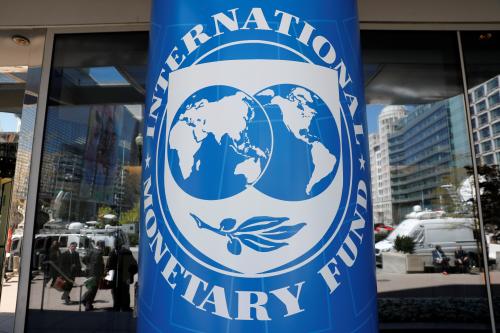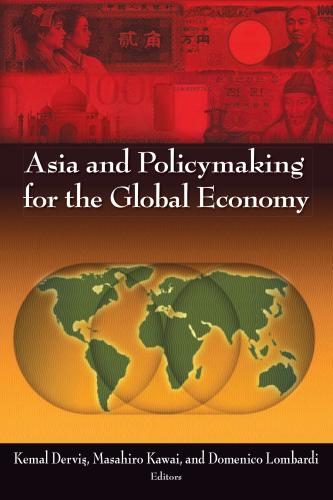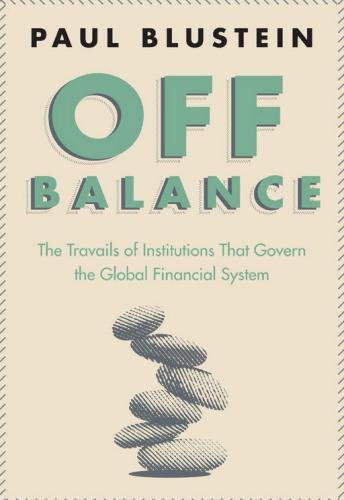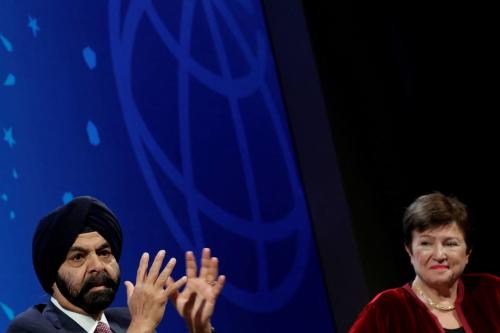SUMMARY
During coming months, member governments will again re-negotiate quota shares and voting-rights shares – “governance shares” – for the International Monetary Fund. This essay emphasizes principles and guidelines that, ideally, should influence the negotiations.
By emphasizing basic principles and introducing ideas not currently entertained, the analysis here is out of tune with the ongoing negotiations. Nonetheless, some participants and observers may find it helpful to stand back, pondering an overview of the issues. Moreover, governments will eventually find themselves pushed to allocate governance shares in the IMF with guidelines that are more defensible and that can be better sustained for the longer run. The analysis here should be, at the least, a cautionary check on the propensity to make short-run choices that exacerbate future problems.
The essay begins with relevant principles and then explains the need for a “quota formula,” an objective assessment of countries’ relative status in the world polity, economy, and financial system. No one formula can be judged as unambiguously preferable. But a powerful case exists for developing a satisfactory formula as an objective starting point for negotiations. An objective formula is a presumptive norm superior to alternative procedures ignoring an objective assessment of the relative status of members. The final outcome of negotiations should be an artful blend of formula calculations and constructive political bargaining.
The preferred structure for a quota formula incorporates variables expressed as the fractional shares of an IMF member in a global total. Ratio-share variables should be included as well as level-share variables. Ratio-share variables can better identify features of members’ economies and polities that are qualitatively distinct rather than dominantly determined by economic size.
The most comprehensive gauges of countries’ relative economic status are based on gross domestic product or income – measured at market prices and exchange rates, measured at purchasing-power parities, or measured as a blend of both. GDP-based variables are the single most important class of variables for a quota formula. Other gauges, however, can be judged relevant. In principle, financial-activity variables should be incorporated (although lack of sufficient data for all IMF members will probably prevent that from happening in the near future). Shares in world population merit inclusion (notwithstanding the failure of official discussions to seriously discuss that possibility). Two ratio-share variables that deserve consideration are the ratio of gross cross-border current-account transactions to market-price GDP (an analytically more appropriate measure of current-account openness than the faulty “openness” variable currently in use) and a scaled gauge of the variability of cross-border transactions (the ratio of standard-deviation calculations of variability scaled by market-price GDP). Alternative conceptual perspectives can of course lead to different choices about the variables to be included in a quota formula.
Against the background of principles and general guidelines, the essay examines the current quota formula that was agreed at the time of the package of governance reforms concluded in April 2008. The communique of the September 2009 G-20 meeting in Pittsburgh indicated that “we [G-20 leaders] are committed to a shift in quota shares to dynamic emerging market and developing countries of at least five percent from over-represented to underrepresented countries using the current IMF quota formula as the basis to work from (italics added). We are also committed to protecting the voting share of the poorest in the IMF.” Unfortunately, there is no straightforward way – however the words are interpreted – to use the current formula as a basis for meeting that commitment. The current formula justifies a large calculated increase in quota share for China, substantial increases for countries such as Mexico, Brazil, Turkey, and moderate increases for some dozen other emerging-market countries. But it calculates declines in quota shares for countries such as India, Russia, Pakistan, and Peru. For the aggregate of all countries other than China, India, Brazil, Mexico, and Russia that are classified as not-advanced and not-higher-income, the formula mandates a share reduction of 3.09 % points. The G-7 countries taken together are calculated as over-represented by the meager amount of only 0.31 percentage points. For the 71 countries eligible as of late 2009 to borrow from the IMF’s Poverty Reduction and Growth Trust Facility (PRGF), the formula calculates a decline in aggregate share of 1.74 percentage points.
The current formula imposes an arbitrary mathematical device of a “compression factor.” If this compression factor is removed from the calculations, the results from using the current formula are still more problematic. For example, the G-7 countries are calculated to be underrepresented by 2.35 percentage points! For the 71 PRGF countries, the current formula without the compression factor points to an even larger decline in aggregate share of 2.16 percentage points.
The conclusion seems inescapable that the current formula is an inadequate basis from which to work if the intent really is to significantly increase the aggregate quota share of dynamic emerging-market and developing countries by at least 5 percentage points. And the current formula points in the wrong direction if the goal is to prevent a diminution in the quota shares of the IMF’s poorest members. Semantic euphemisms aside, negotiators will have to abandon the current formula and find some better way to construct and explain their decisions.
One possibility would entail de facto jettisoning of all formulas and negotiating a bargaining outcome that could command consensus from the largest, most influential IMF members. Yet that course would undermine, now and for the future, development of a presumptive norm for objective assessment of countries’ relative status.
To encourage thinking about possible revisions in the quota formula, the essay describes an illustrative revised formula and reports results from its use. That illustration raises the combined weight associated with GDP variables; reduces the weights on gross cross-border transactions, on unscaled variability, and on international reserves; adds a new variable for shares in world population; and introduces ratio-share variables for current-account openness and scaled variability. The illustrative formula is not so much a recommendation as a catalyst for further thinking about how to improve the ability of the quota formula to achieve systemic IMF goals.
The illustrative formula generates very different conclusions from those obtained with the current formula. For example, the G-7 countries are over-represented by the large amount of 4.72 % points. China is calculated with a much larger quota share; the calculated shares of India, Brazil, and Mexico are significantly larger. The 78 poorer IMF members eligible to borrow from the IMF’s PRGF are under-represented by 5.02 % points (instead of over-represented by 2.25 % points).
The illustrative formula is an improvement in several respects. But other aspects are problematic. For many IMF members, the calculated increments in shares would be controversial. No doubt many official participants in the negotiations will perceive the illustration as going too far in shifting quota shares away from developed and toward emerging market and developing members.
The adjustments in quota shares to be decided in the upcoming negotiations – and, in turn, the changes in voting shares derived from them — are just part of the large subject of reforms for IMF governance. The size and composition of the IMF Executive Board, and hence the organization of members into constituencies, are at least as important. Other key issues include the size of prospective quota increases and SDR allocations, and implementation of the Council provided for as a possibility in the Articles of Agreement.
This essay has a restricted focus and does not try to cover the other dimensions of governance reform. Yet those dimensions are closely interdependent with what has been analyzed here. An improved formula and procedures for allocating quota shares is a necessary condition – necessary, but not sufficient – for satisfactory resolution of the whole range of governance issues.
The world community in the upcoming negotiations in 2010 should frankly acknowledge the inadequacy of the existing quota formula and try to reach agreement on an improved approach for the determination of governance shares.








